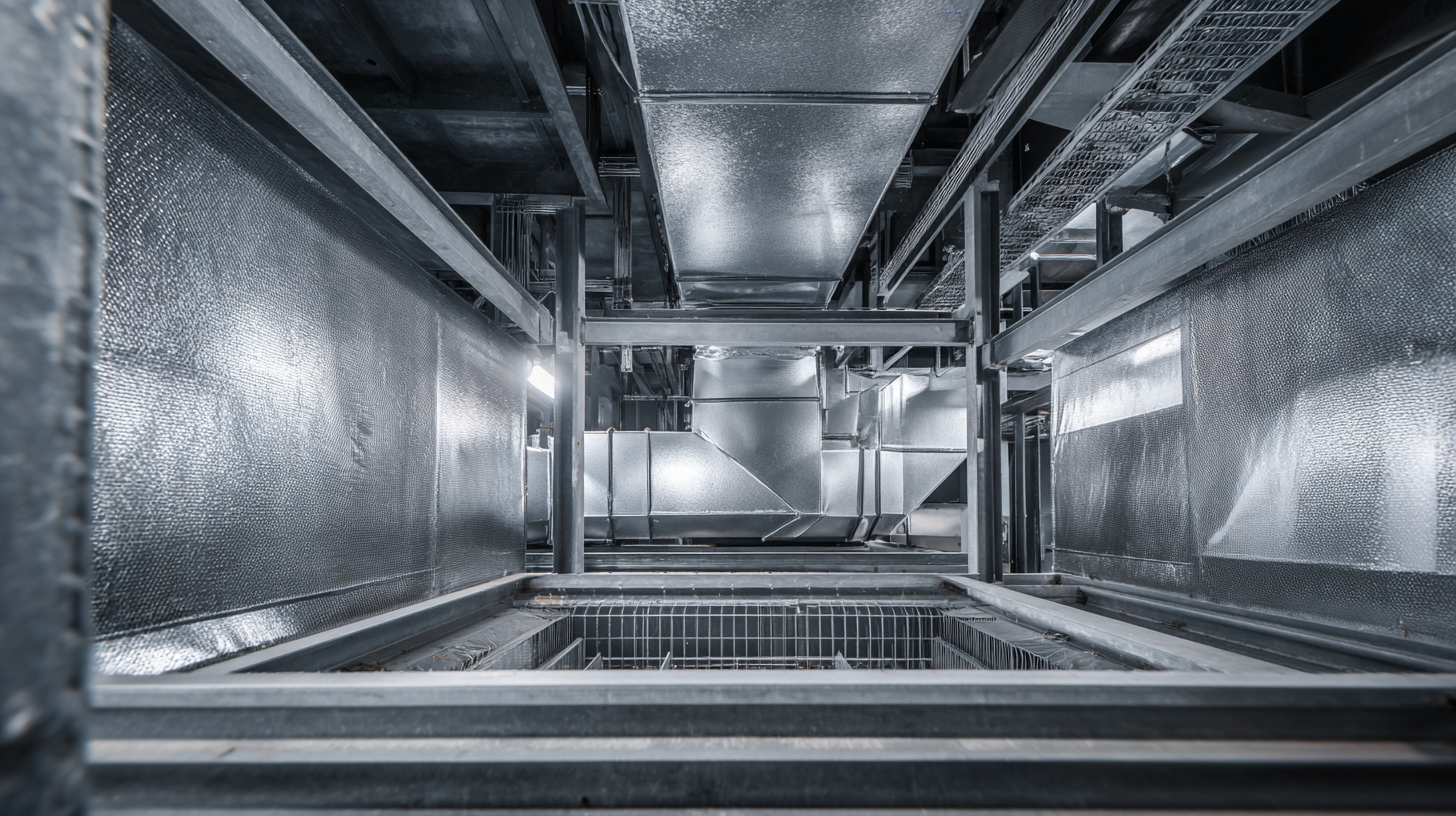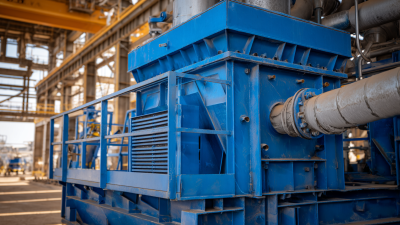Air quality is a crucial aspect of maintaining a healthy living environment, and effective conditioning filters play a significant role in achieving optimal indoor air conditions. According to the Environmental Protection Agency (EPA), indoor air can be two to five times more polluted than outdoor air, exposing occupants to allergens, chemicals, and particulates that can affect health. A comprehensive study by the American Society of Heating, Refrigerating and Air-Conditioning Engineers (ASHRAE) highlights that the correct selection and maintenance of conditioning filters can significantly reduce airborne pollutants by up to 95%. By optimizing the use of these filters, such as HEPA or MERV-rated options, homeowners and businesses can improve air quality, reduce respiratory problems, and enhance overall comfort. This guide will explore how to optimize air quality using effective conditioning filters, ensuring a healthier environment for everyone.

Indoor air quality is essential for maintaining a healthy living environment. Poor air quality can lead to various health issues, including respiratory problems, allergies, and fatigue. Many individuals spend significant time indoors, whether at home or in the workplace, making it vital to ensure that the air they breathe is clean and free of pollutants. Factors such as dust, mold, pet dander, and volatile organic compounds (VOCs) can severely impact indoor air quality, contributing to discomfort and long-term health risks.
Effective conditioning filters play a crucial role in enhancing indoor air quality by trapping these harmful particles and preventing them from circulating in the air. High-efficiency particulate air (HEPA) filters, for example, can capture up to 99.97% of airborne particles, significantly reducing allergens and irritants. Regular maintenance and timely replacement of filters are essential practices to maximize their effectiveness. By prioritizing air quality through the use of conditioning filters, individuals can create healthier indoor spaces, promoting overall well-being and productivity.
Air quality is significantly influenced by the type of conditioning filters employed in HVAC systems. There are various types of filters, each with unique capabilities in capturing pollutants. For instance, High Efficiency Particulate Air (HEPA) filters are designed to remove at least 99.97% of airborne particles measuring 0.3 microns. According to a report by the Environmental Protection Agency (EPA), using HEPA filters can reduce indoor particulate matter by an impressive 50% to 85%, improving overall air quality substantially.
Another type to consider is the activated carbon filter, which effectively targets volatile organic compounds (VOCs) and odors. Studies conducted by the American Lung Association indicate that these filters can significantly reduce harmful gases in indoor environments, enhancing comfort and health for occupants. Additionally, electrostatic filters, which utilize static electricity to capture particulates, can also contribute to cleaner air. Data from the Indoor Air Quality Association shows that these filters can capture up to 90% of airborne particles, making them a practical option for those seeking to improve indoor air quality. By selecting the appropriate conditioning filter, homeowners can significantly enhance their living environments and promote better health.

When selecting effective conditioning filters to optimize air quality, several key features must be considered. First, look for filters with a high Minimum Efficiency Reporting Value (MERV) rating. Filters with a MERV rating of 13 or higher can capture up to 98% of airborne particles, including dust, pollen, and mold spores. According to the U.S. Environmental Protection Agency, improved air filtration can significantly enhance indoor air quality, reducing respiratory issues and allergies.
Another essential feature is filter material. High-efficiency particulate air (HEPA) filters, which trap particles as small as 0.3 microns, are highly recommended for improving air quality. The American Lung Association states that regular replacement of these filters every 3-6 months can further enhance their effectiveness.
**Tips:** Ensure that the filter fits your HVAC system properly. An ill-fitting filter can allow unfiltered air to pass through, negating its benefits. Additionally, consider a filter that is designed to combat specific pollutants if your household has unique challenges, such as pets or smokers. Choosing a filter with activated carbon can also help in reducing odors and volatile organic compounds (VOCs) from the air, contributing to a healthier living environment.
 Maintaining and replacing air filters is crucial for optimizing air quality in any environment, especially in spaces like cleanrooms where standards are stringent. Regular maintenance practices include checking filters monthly, cleaning pre-filters, and replacing HEPA filters according to the manufacturer's recommendations. A well-maintained filter ensures efficient airflow and maximizes the filtration of airborne particles, which is essential for health and safety.
Maintaining and replacing air filters is crucial for optimizing air quality in any environment, especially in spaces like cleanrooms where standards are stringent. Regular maintenance practices include checking filters monthly, cleaning pre-filters, and replacing HEPA filters according to the manufacturer's recommendations. A well-maintained filter ensures efficient airflow and maximizes the filtration of airborne particles, which is essential for health and safety.
When it comes to replacing air filters, adhering to a schedule based on usage and environmental conditions is imperative. Filters can become clogged over time, leading to decreased performance and potential air quality issues. Knowing the signs of a failing filter, such as increased noise from the HVAC system or visible dust buildup, can prompt timely replacements. By prioritizing effective maintenance and timely replacements, facilities can significantly enhance their air quality, ensuring a cleaner and healthier indoor environment.
Integrating air quality monitoring with conditioning filters is crucial for maintaining a healthy indoor environment. A recent report by the Environmental Protection Agency (EPA) highlights that indoor air can be two to five times more polluted than outdoor air, primarily due to dust, allergens, and volatile organic compounds (VOCs). By utilizing advanced air quality monitors, homeowners can gain real-time insights into particulate matter and other contaminants, allowing them to adjust their conditioning filters accordingly.
When selecting conditioning filters, it’s essential to consider their Minimum Efficiency Reporting Value (MERV) rating. Filters with a MERV rating of 13 or higher are capable of capturing smaller particles, including pollen and smoke. According to the American Society of Heating, Refrigerating and Air-Conditioning Engineers (ASHRAE), using such filters in conjunction with effective monitoring can reduce airborne allergens by up to 90%. In addition, implementing smart air quality monitors that trigger alerts when pollution levels spike can further enhance the filtration process, ensuring that the air quality in your home remains optimal. This proactive approach not only improves health outcomes but also contributes to energy efficiency in HVAC systems.
| Filter Type | Particle Removal Efficiency (%) | Filter Lifespan (Months) | Air Quality Index Improvement | Installation Ease (1-5) |
|---|---|---|---|---|
| HEPA Filter | 99.97 | 12 | 30 | 4 |
| Activated Carbon Filter | 85 | 6 | 20 | 3 |
| Electrostatic Filter | 95 | 9 | 25 | 5 |
| UV Filter | N/A | 12 | 15 | 5 |
| Washable Filter | 75 | 24 | 10 | 4 |






